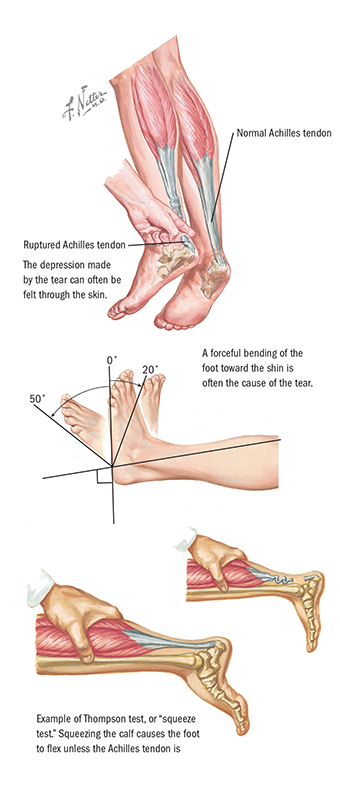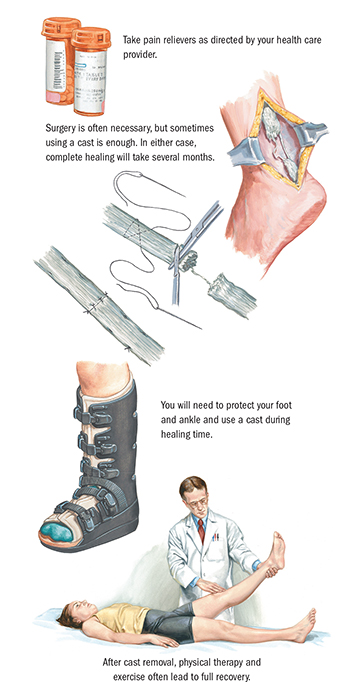
A tendon is a band of tough tissue that usually connects muscle to bone. The Achilles tendon is the tendon connecting the calf muscles to the heel. Achilles tendon rupture is a common injury of this tendon. It can happen at any age but most often occurs in 40- to 50-year-old men who engage in athletic activities after a long hiatus from exercise.
The tendon can rupture or tear partially or completely by jumping, forcefully bending the foot toward the shin, or receiving a direct hit to the area. Certain medications such as quinolone antibiotics can increase the risk of tendon rupture.
The most common symptom is stabbing pain in the lower calf at the time of injury.
Walking without pain is often impossible, especially when trying to push off the toe. Swelling occurs, and calf muscles may appear bunched up. Standing on tiptoe of the injured foot may also be impossible.
The health care provider uses a history and physical examination. The health care provider will also do a Thompson test, or squeeze test. With a normal or partially torn tendon, squeezing calf muscles causes the ankle to flex. With an Achilles tendon rupture, this squeezing doesn’t produce the ankle motion.

The rupture is sometimes treated with casts but most commonly surgery is used. After surgery, the foot is immobilized with casts in different positions. The health care provider will probably suggest using a heel lift or high-heeled shoe for a certain period after the casts are removed.
If the ends of the tendon can reattach without surgery, your health care provider may suggest a cast for 10 to 12 weeks, with two cast changes, and then use of a heel lift.
Recovery is slow and may take up to 6 months, but with exercise and physical therapy, most people recover completely.
Contact the following sources:
Copyright © 2016 by Saunders, an imprint of Elsevier, Inc.
Ferri’s Netter Patient Advisor